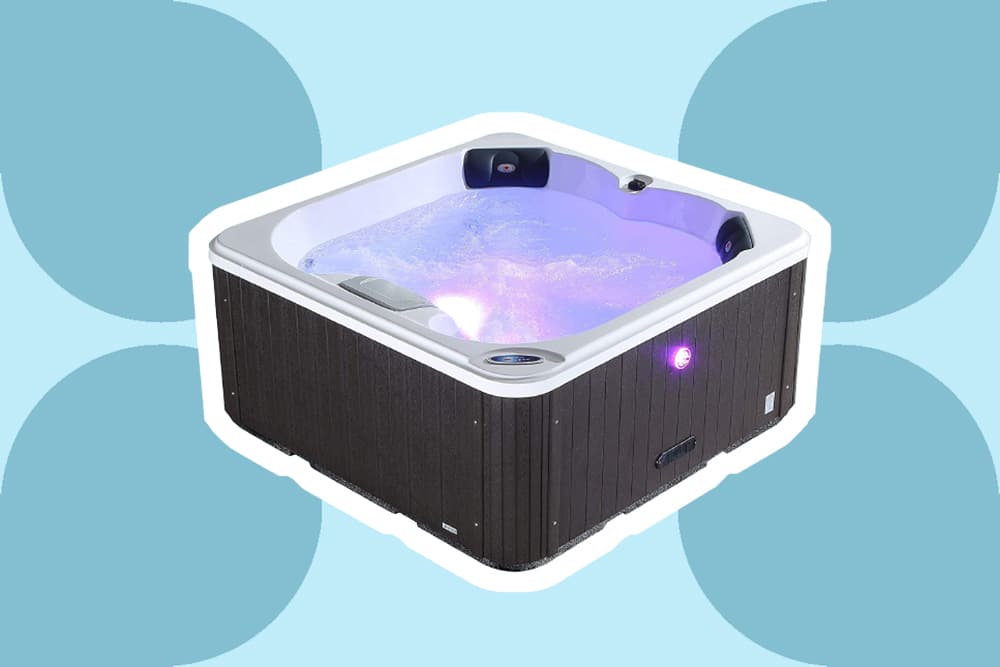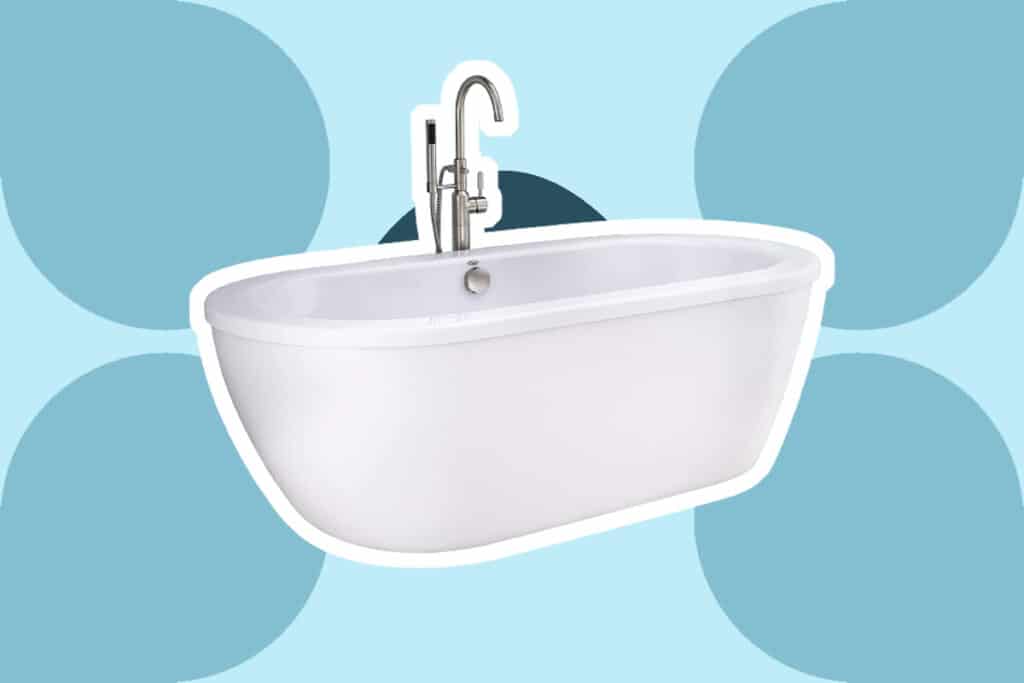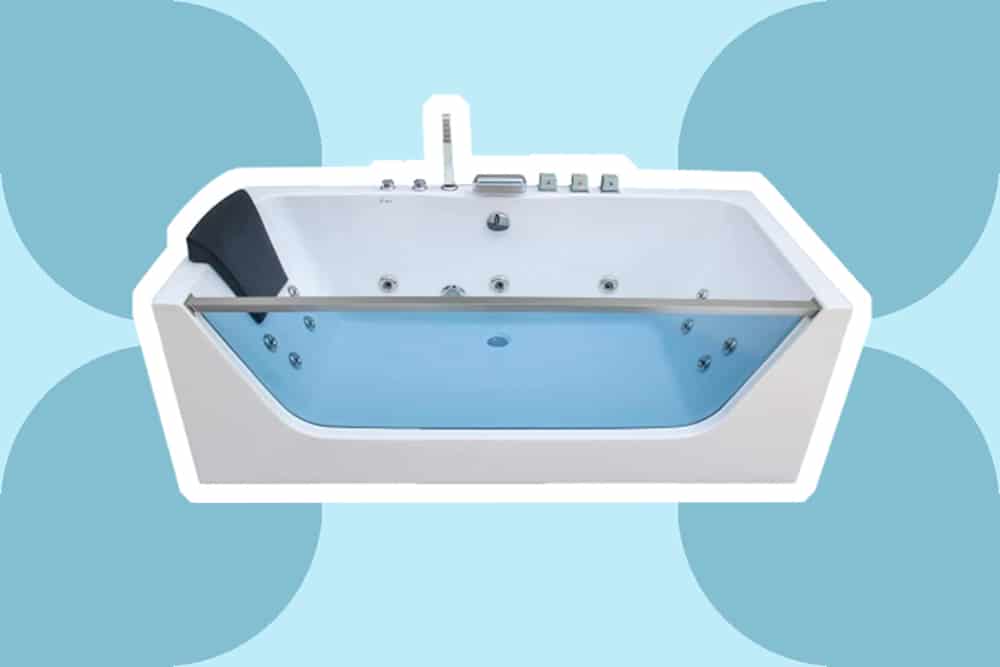

Soaking in a hot tub is of no doubt one of life’s greatest pleasures especially after a stressful day at work. So if you’re thinking of upgrading your bathroom, something bigger and better will always be a good idea when it comes to tubs.
However, most people face the common dilemma of having to choose between acrylic or fiberglass material for their tubs. Both fiberglass and acrylic tubs are durable and sensible options for your bath needs. Both materials are lightweight and flexible. Another thing you will find out when shopping for these materials is that they are both inexpensive and readily valiant in the industry as opposed to how costly bathtubs installation can be.
So, how do you choose the material that is ideal for you? Well, this is what this guide is all about. We’ve put together vital information about both the acrylic and fiberglass tubs elucidating their pros, cons, and unique features. This guide will help you make an informed decision so you can get the most relaxing tub for your bath.
Acrylic bathtubs are colored plates of clear plastic strengthened with several layers of fiberglass. Acrylic offers sturdy, strong support and requires less maintenance compared to other materials in the market.
To produce acrylic tubs, manufacturers heat an acrylic sheet in the oven and then place the sheet in a vacuum mold. After that, the air between the acrylic sheet and the mold is removed to allow the acrylic sheet to morph into the mold. Once the acrylic mold is cooled, several layers of fiberglass reinforced product are sprayed on the acrylic mold.
As a result of this production process, acrylic bathtubs are very durable, lightweight, and require less maintenance. However, this production process makes acrylic tubs more expensive than fiberglass tubs.
Pros
Cons
Fiberglass is also a sturdy and strong material, however, with relatively low maintenance. Fiberglass tubs are made from exact materials used to manufacture cars, trucks, and boats.
Courtesy of the super-lightweights of the fiberglass material, it is usually installed in two-story buildings and homes. This is because there won’t be a need for extra support between the floor and the bathtub since the fiberglass bathtub is light.
The super-lightweight of fiberglass can be attributed to the processing method most manufacturers use in producing fiberglass. To produce the fiberglass, small strands of fiberglass are weaved together. Then, the manufacturer combines both the Fiberglass Reinforced Product (FRP) and polyester resin mix to form the tub’s shape. As soon as the manufacturer has added the FPR layer, the tun is removed from the mold to properly shape the tub to the final product.
Pros
Cons
The acrylic vs fiberglass tub debate won’t be ending anytime soon. But as much as we want to learn the differences between these materials, it’s good to point out that there are also many similarities between them.
These similarities are also some of the reasons why these materials are so popular. Let’s have a look at some of these similarities.
Both acrylic and fiberglass tubs have beautiful and shiny surfaces because they are surfaced and sealed with plastic products. Regardless of the color, the finishing touches of both acrylic and fiberglass tubs are always attractive and glossy.
In comparison to cast iron, stone, and other metal materials, fiberglass and acrylic tubs offer a product this Is very affordable and cheap. However, between acrylic and fiberglass tubs, the fiberglass tub is the cheaper material.
Both acrylic and fiberglass materials offer a wide variety of shapes, types, and designs of tubs which gives consumers the luxury of choosing from so many options.
Now to address the never-ending debate of fiberglass vs acrylic tubs. The differences between these materials are quite clear with one having an edge over another depending on the features being considered. Let’s have a look at some of these differences.
In terms of weight, fiberglass tubs weigh lesser than acrylic tubs which makes them easier to use under specific conditions. As a result of their lightweight, fiberglass tubs are easier to transport, install, and fit into positions compared to acrylic tubs. Furthermore, for two-story homes and buildings, fiberglass tubs require less flooring support because of their lightweight.
On the other hand, acrylic tubs are of thicker materials. Which means they weigh more than fiberglass. However, acrylic tubs are still lighter than cast iron and other types of tubs in the market.
Fiberglass tubs are more fragile and thinner compared to acrylic tubs. The thinness of fiberglass males is more liable to cracking and chipping through the years.
On average, fiberglass tubs have a lifespan of 10 to 15 years.
As mentioned earlier, acrylic tubs are thicker than fiberglass tubs. This makes it more durable, strong, and less liable to cracking compared to fiberglass. On average, acrylic tubs have a lifespan of 30 years.
Even though fiberglass tubs are easily prone to chipping and cracking, they are also very easy to repair. Little cracks and chips on fiberglass tubs can be easily refurbished. All that is needed is some sanding, curing, and mixing.
Acrylic tubs have a thicker and solid surface compared to fiberglass. As a result, minor scratches are not usually obvious on acrylic tubs. However, huge cracks are usually a big problem. This is because huge cracks may go all the way through the tub causing major leaks.
As a result, the process of repair is usually complicated and may need an additional extensive supporting structure for the tub.
The glossy finish of fiberglass tubs is achieved by coating the tubs with a gel coat resin. With the gel coat resin, fiberglass tubs are thinner and softer than acrylic tubs.
The thinner and softer nature of the fiberglass tub makes it more liable to fading and scratching. As a result, non-abrasive cleaners should be used to clean fiberglass tubs to avoid damaging the glossy top layer.
Acrylic tubs are manufactured with thicker and stronger materials, therefore they keep their glossy finish much longer. This is because they are less liable to color loss and abrasion.
However, gentle cleaners should still be used on acrylic tubs to preserve and keep the glossy finish longer
Acrylic tubs vs fiberglass: both materials provide an attractive and affordable way to upgrade and beautify your bathrooms. They’re both easy to install, durable, and have a wide range of available designs.
Putting into consideration your commitment to maintenance, cleaning, and longevity, you should be able to weigh the pros and cons of installing one over the other.





